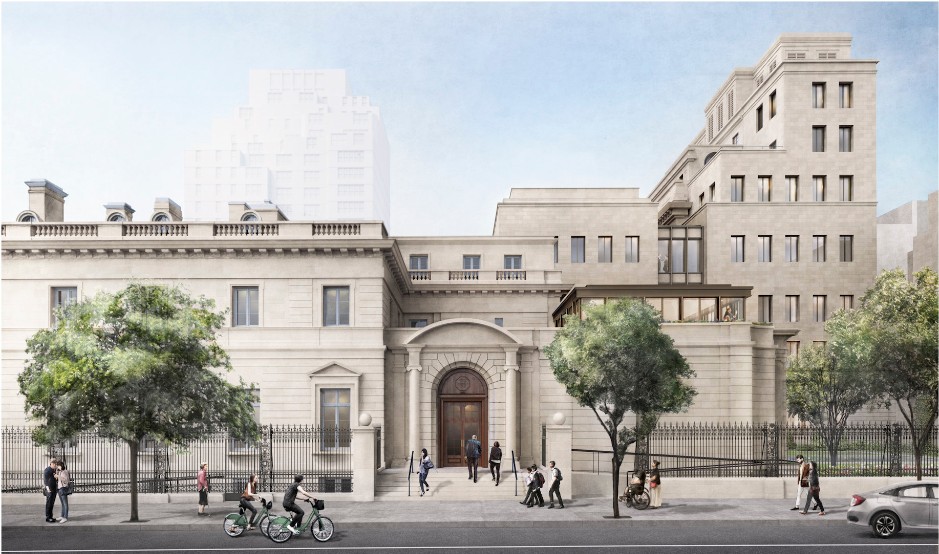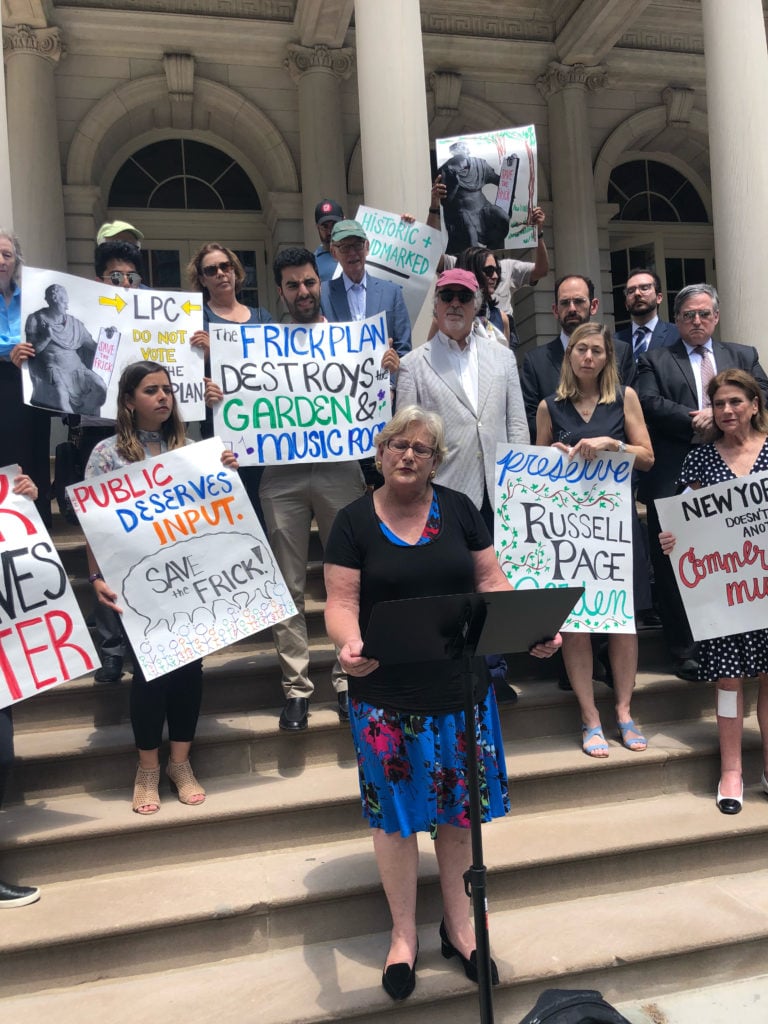Art World
The Frick Finally Gets the Green Light for Its Long-Planned Expansion, Thwarting Preservationists
The Landmarks Preservation Commission voted 6-to-1 in favor of the Frick's expansion plans.
The Landmarks Preservation Commission voted 6-to-1 in favor of the Frick's expansion plans.
Caroline Goldstein

New York’s Frick Collection took a major step toward its long-planned expansion today. The city’s Landmarks Preservation Commission voted to approve the museum’s renovation plan, which is its fourth proposal in 20 years. The vote came after another intense, marathon public hearing during which museum representatives presented a tweaked design by Selldorf Architects and faced off with preservationists who remain opposed to the project.
The audience at today’s hearing was smaller than that at the previous one on May 29, which resulted in no decisions. Frick director Ian Wardropper and architect Annabelle Selldorf addressed concerns raised by members of the public and by two advocacy groups, Unite to Save the Frick and Stop Irresponsible Frick Development.
The Frick has had to go back to the drawing board several times in recent years to address dissent, which largely centers around preserving the Russell Page Garden and the museum’s circular music room, which advocates had hoped would be classified as landmarks
At the meeting, Selldorf presented floor plans and architectural renderings that had been retooled to address specific concerns raised by the public. In her presentation, the architect told the committee that “we’re pushing and pulling.” That included amending the renovation plans to keep the north wall in place (part of the garden’s original plan). But Selldorf pointed out that this would compromise the work spaces for staffers and that any further accommodations would ruin the viability of the entire plan.

Rendering of The Frick Collection from 70th Street. Courtesy of Selldorf Architects.
Members of the Landmark Preservation Committee also grilled the museum’s representatives on the feasibility of more extensive subterranean additions, which, they argued, could mitigate changing the iconic facade of the Upper East Side mansion.
The other thorn in the side of the Frick’s leadership is the music room, a circular chamber that hosts concerts and private events. The renovation plans would see the music room turned into a special exhibitions gallery on the main floor, with access to the new conservation laboratories that would be installed directly above the space. Committee members took pains to make their displeasure with the music room’s future known, specifically asking Wardropper and Selldorf if they had, in fact, considered every possible option to save the circular footprint of the space, even if it would ultimately be used as a gallery. In response, Wardropper brought up the logistical difficulty that comes with “hanging flat paintings on curved walls.”

Martha Frick Symington Sanger speaking on behalf of the group Stop Irresponsible Development at City Hall. Photo by Caroline Goldstein.
Stop Irresponsible Frick Development unsuccessfully sought a temporary restraining order against the Landmarks Preservation Committee yesterday in order to stop today’s vote from taking place. The group hoped to delay it until the Landmarks Preservation Committee had addressed its “request for evaluation” of the music room, which they say should be landmarked.
Before today’s vote, members of the group gathered on the steps of City Hall for a press conference. A group of citizens, including the outspoken great-granddaughter of Henry Clay Frick, Martha Frick Symington Sanger, held signs that read “Frick Deserves Better” and lamented the rise of commercialized museum.
The renovation is expected to be completed in 2022.